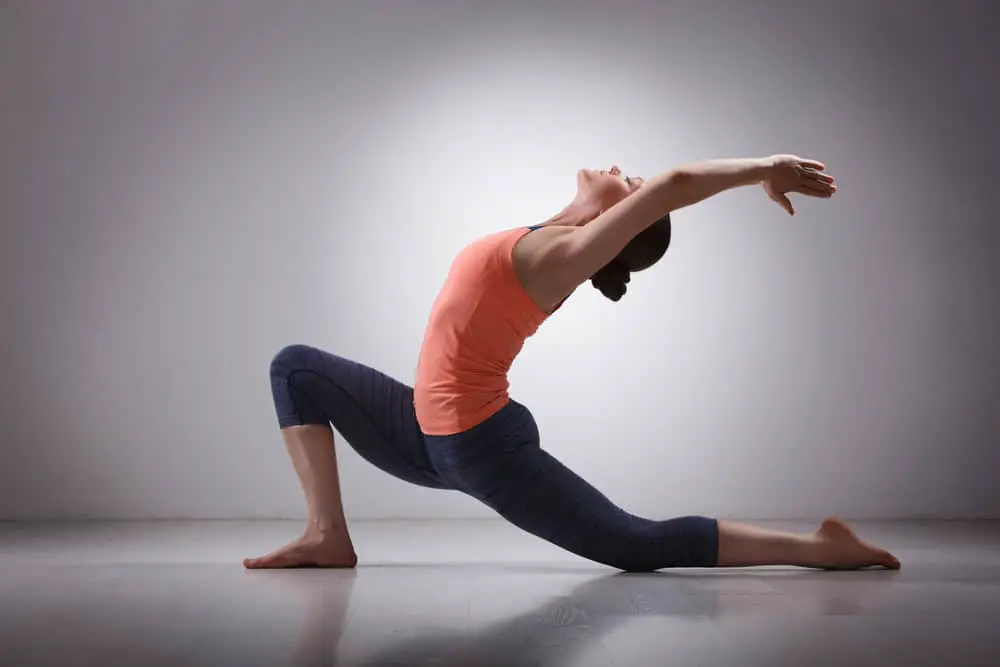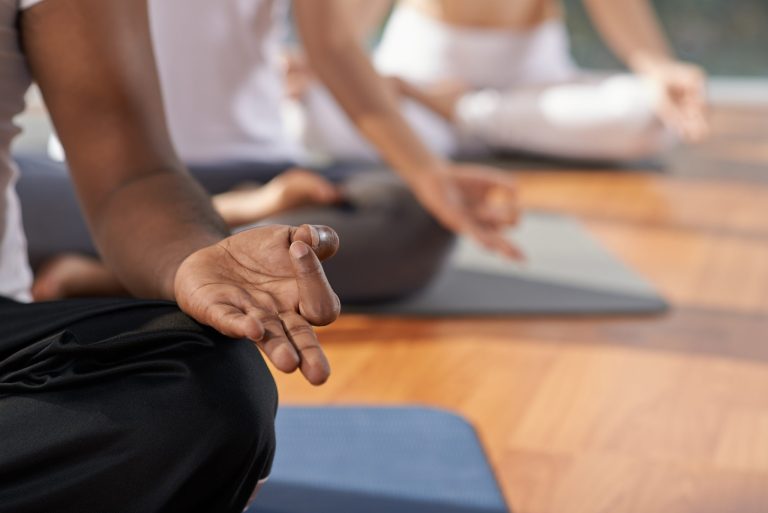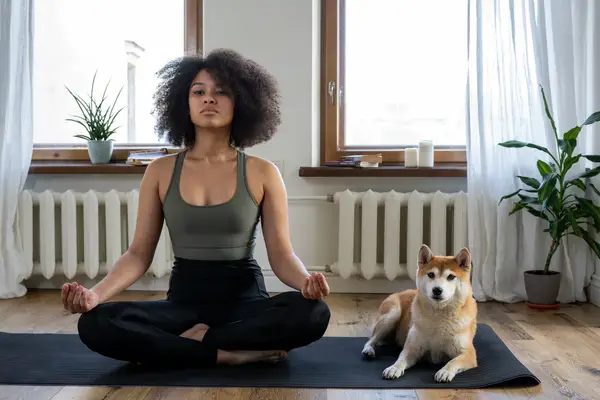Double the Zen: Try Yoga Twice a Day!
Practicing yoga twice a day is an ideal way to establish a consistent routine and deepen your yoga practice. This regularity allows you to reap the benefits of increased flexibility, strength, and mental clarity. Whether you choose to practice a vigorous flow or a gentle restorative session, carving out time each day to focus on your mind-body connection can have a profound impact on your overall health and well-being. Embrace the transformative power of yoga and commit to a daily practice to experience the full range of its benefits.

Benefits of Practicing Yoga Twice a Day
Yoga is a physical, mental, and spiritual practice that has been around for thousands of years. Many people practice yoga daily as a way to improve their overall health and well-being. But what if you practiced yoga twice a day? Would there be any additional benefits? In this section, we will explore the advantages of doing yoga twice a day.
1. Increased Flexibility
Practicing yoga twice a day can help increase flexibility in your body. During your first session in the morning, you may notice that your muscles are stiff and tight from sleeping all night. However, as you continue to practice yoga throughout the day, your muscles will become more pliable and relaxed. Over time, this can help you achieve deeper stretches and poses that you may not have been able to do before.
2. Reduced Stress and Anxiety
Yoga is known for its ability to reduce stress and anxiety. Practicing yoga twice a day can provide even more benefits for your mental health. By taking the time to practice yoga multiple times a day, you allow yourself to disconnect from the outside world and focus on your breath and movements. This can help calm your mind, reduce stress, and decrease anxiety.
3. Improved Strength and Endurance
Practicing yoga twice a day can also help improve your overall strength and endurance. During each session, you will be engaging your muscles in various poses and movements. By doing this multiple times a day, you allow your muscles to continue building strength and endurance. Over time, this can lead to improved performance in other physical activities and sports.
4. Better Sleep
People who practice yoga often report better sleep. Practicing yoga twice a day can take this benefit to the next level. By practicing in the morning and evening, you can help regulate your sleep-wake cycle. Additionally, practicing yoga before bed can help you relax and unwind, which can improve the quality of your sleep.
5. Increased Self-Awareness
Practicing yoga twice a day can help increase your self-awareness. By taking the time to practice yoga in the morning and evening, you allow yourself to check in with your body, mind, and emotions. This can help you become more in tune with yourself and your needs, which can lead to better decision-making and a greater sense of overall well-being. In summary, practicing yoga twice a day can provide numerous benefits for your physical, mental, and spiritual health. By doing so, you can increase your flexibility, reduce stress and anxiety, improve your strength and endurance, get better sleep, and increase your self-awareness. So why not give it a try and see how it can benefit you?
Best Yoga Poses for a Morning Practice
Yoga is a great way to start your day as it helps loosen up your muscles, improves circulation, and clears your mind. A morning yoga practice can help set the tone for the rest of your day, leaving you feeling grounded and energized. Here are some of the best yoga poses to include in your morning routine:
1. Sun Salutations (Surya Namaskar)
Sun Salutations are a great way to warm up your body and get your blood flowing. They consist of a series of standing and seated poses that stretch and strengthen your entire body. Begin in Tadasana (Mountain Pose), then flow through a series of poses like Forward Fold (Uttanasana) and Plank Pose (Phalakasana) before ending in Downward-Facing Dog (Adho Mukha Svanasana).
2. Cat-Cow (Marjaryasana-Bitilasana)
Cat-Cow is a gentle stretch for your spine that helps massage your internal organs. Begin on your hands and knees, then inhale and lift your tailbone while arching your back and looking up (Cow Pose). Exhale and round your spine while tucking your chin to your chest (Cat Pose). Repeat several times.
3. Warrior II (Virabhadrasana II)
Warrior II is a standing pose that strengthens your legs and core while opening up your hips. Begin in Tadasana, step your left foot back, and turn it out slightly. Bend your right knee and extend your arms out to the sides, palms down. Hold for several breaths, then switch sides.
4. Triangle Pose (Trikonasana)
Triangle Pose is a standing pose that stretches your hamstrings, hips, and spine while strengthening your legs and core. Begin in Warrior II, then straighten your front leg and reach your right hand toward your right shin while lifting your left arm up. Hold for several breaths, then switch sides.
5. Child’s Pose (Balasana)
Child’s Pose is a resting pose that helps calm your mind and stretch your back and hips. Begin on your hands and knees, then sit back on your heels while stretching your arms forward. Rest your forehead on the ground and breathe deeply for several breaths. In summary, incorporating these morning yoga poses into your daily routine can help you start your day feeling refreshed and energized. Remember to breathe deeply and listen to your body as you move through each pose. If you are new to yoga, consider taking a class or working with a teacher to ensure proper alignment and technique.
Best Yoga Poses for an Evening Practice
Yoga is a great way to unwind after a busy day. It can help you relax, release tension from the body, and calm the mind. Practicing yoga in the evening can also help you sleep better, as it can reduce stress levels and prepare your body for rest. In this section, we will discuss the best yoga poses to include in your evening practice.
1. Child’s Pose
Child’s pose is a gentle resting pose that can help calm the mind and relieve stress. To practice child’s pose, begin on your hands and knees. Touch your big toes together and sit back on your heels. Reach your arms forward and rest your forehead on the floor. Take deep breaths in and out, feeling your body relax with each exhale.
2. Forward Fold
Forward fold is a great pose to release tension from the back and hamstrings. To practice forward fold, stand with your feet hip-width apart. Inhale and reach your arms up overhead, then exhale and fold forward from the hips. Allow your hands to rest on the floor or on a block, and let your head hang heavy. Take a few deep breaths here, feeling your spine lengthen with each inhale and your muscles release with each exhale.
3. Downward-Facing Dog
Downward-facing dog is a staple pose in yoga that can help lengthen the spine, release tension from the back and shoulders, and calm the mind. To practice downward-facing dog, begin on your hands and knees. Tuck your toes under and lift your hips up and back, coming into an inverted V-shape. Press your hands into the floor and relax your head and neck. Take a few deep breaths here, feeling your body stretch and release.
4. Pigeon Pose
Pigeon pose is a deep hip opener that can help release stored tension in the hips and buttocks. To practice pigeon pose, begin on your hands and knees. Bring your right knee forward and place it behind your right wrist. Stretch your left leg behind you and lower your hips toward the floor. Rest your hands on the floor and take deep breaths, feeling your hip muscles release with each exhale. Repeat on the other side.
5. Legs Up the Wall
Legs up the wall pose is a relaxing pose that can help improve circulation and reduce swelling in the legs and feet. To practice legs up the wall, sit with your right hip against a wall. Lie back and swing your legs up the wall, so that your hips are against the wall and your legs are straight up. Relax your arms by your sides and take deep breaths, feeling your body rest and rejuvenate. In summary, practicing yoga in the evening can help you relax and unwind after a busy day. The best poses to include in your evening practice are child’s pose, forward fold, downward-facing dog, pigeon pose, and legs up the wall. These poses can help release tension from the body, calm the mind, and prepare you for a restful night’s sleep. To get the most out of your evening yoga practice, take your time with each pose, breathe deeply, and tune in to the sensations in your body.
Creating a Balanced Yoga Routine with Two Sessions per Day
Maintaining a healthy body and mind is essential for a happy and fulfilling life. Regular exercise coupled with a balanced diet can help you achieve this. Among the numerous forms of exercise, yoga stands out as a holistic practice that benefits both the mind and body. With a disciplined practice, yoga can help you improve your flexibility, strength, and balance, and increase your focus and serenity. If you want to take your practice to the next level, you can consider doing two yoga sessions per day. This practice can help you deepen your understanding of yoga postures, explore more advanced poses, and enjoy the numerous benefits of yoga. To create a balanced yoga routine with two sessions per day, here are some tips to keep in mind:
Determine Your Goals
Before you start practicing yoga twice a day, it’s important to determine your goals. Are you looking to improve your strength, flexibility, balance or reduce stress? Knowing what you want to achieve can help you create a customized yoga routine that aligns with your objectives.
Choose the Right Sequence
To ensure that your yoga routine is balanced, it’s crucial to choose the right sequence of poses. Your morning routine can include postures that energize your body and mind, such as Sun Salutations and standing poses. Your evening practice can focus on restorative and relaxing poses, such as forward bends, twists, and inversions.
Be Mindful of Your Body
Practicing yoga twice a day can be taxing on your body if you don’t take the time to rest and recover. It’s essential to be mindful of your body and listen to its signals. If you feel tired, give yourself a break, or modify your postures. Make sure you also stay hydrated and nourish your body with healthy foods.
Mix It Up
Doing the same yoga routine every day can get monotonous and hinder your progress. To keep your practice fresh and engaging, try different types of yoga styles and sequences, such as Vinyasa, Hatha, Yin, or Restorative yoga.
Set Realistic Goals
Finally, it’s crucial to set realistic goals when creating a yoga routine with two sessions per day. Don’t push yourself too hard or expect immediate results. Take your time and enjoy the journey, and soon you’ll notice the positive changes in your body and mind. In summary, practicing yoga twice a day can be a great way to deepen your practice and enjoy the numerous benefits of this ancient practice. To create a balanced yoga routine with two sessions per day, it’s important to determine your goals, choose the right sequence of poses, be mindful of your body, mix up your routine, and set realistic goals. With consistent practice and dedication, you can create a sustainable yoga routine for a healthy and happy life.
Tips for Staying Motivated to Practice Yoga Twice a Day
Yoga is an excellent way to improve your physical and mental health. It can help you relieve stress, improve flexibility, build strength and endurance, and enhance your overall well-being. But to get the full benefits of yoga, you need to practice it regularly. That is why it is recommended to practice yoga twice a day. However, it can be challenging to stay motivated and stick to your daily yoga routine. In this section, we will share some tips to help you stay motivated and committed to practicing yoga twice a day.
1. Set a Clear Intention
Before you start your yoga practice, take a few moments to set an intention. Think about why you want to practice yoga twice a day. What benefits do you hope to gain from your practice? Setting a clear intention can help you stay focused and motivated during your practice. It gives you a purpose and a reason to continue practicing even when you feel unmotivated.
2. Create a Schedule
Creating a schedule can help you stay on track with your yoga practice. Decide on an exact time that you will practice yoga twice a day and stick to it. It is essential to make your practice time a priority and treat it like any other appointment. Creating a schedule can help you develop a consistent routine and make it easier to incorporate yoga into your daily life.
3. Find an Accountability Partner
Having someone to practice yoga with can be a great way to stay motivated and committed to your practice. Find a friend or family member who shares your interest in yoga and commit to practicing together twice a day. You can also join a yoga group or class to connect with other yogis in your community. Having an accountability partner can help you stay motivated and committed to your practice, even when you don’t feel like practicing.
4. Mix up Your Routine
Doing the same yoga routine every day can become boring and challenging to stay motivated. To keep your practice fresh and exciting, try mixing up your routine. You can add new poses, try different sequences, or explore different styles of yoga. Mixing up your routine can help you stay engaged and interested in your practice.
5. Celebrate Your Progress
It’s essential to recognize and celebrate your progress along the way. Celebrating your progress can help you stay motivated and committed to your practice. Acknowledge the small victories, such as practicing for a whole week or mastering a challenging pose. Celebrating your progress can help you stay motivated and committed to your practice. In summary, practicing yoga twice a day can be incredibly beneficial to your physical and mental health. To stay motivated and committed to your practice, set a clear intention, create a schedule, find an accountability partner, mix up your routine, and celebrate your progress. Incorporating these tips into your daily life can help you stay motivated and committed to your yoga practice. Remember, yoga is a journey, and the key is to enjoy the journey and the process of learning and growing.

FAQs
Can I do yoga twice a day?
Yes, you can do yoga twice a day, but it’s important to listen to your body and not overdo it. It’s recommended to have a gap of at least 6 hours between each yoga session to give your body enough time to rest and recover.
What are the benefits of doing yoga twice a day?
Doing yoga twice a day can improve your overall well-being, increase flexibility, enhance mental clarity, and provide a sense of calmness and relaxation. Consistent practice can also help balance your energy and reduce stress levels.
What are some tips for practicing yoga twice a day?
Some tips for practicing yoga twice a day include finding a routine that works for your schedule, choosing a mix of active and restorative practices, staying hydrated, and listening to your body’s needs. It’s also important to warm up properly before each session and cool down with some gentle stretches afterwards.
Conclusion:
In conclusion, practicing yoga twice a day has numerous benefits for both the mind and body. It helps to improve flexibility, strength, balance, and overall well-being. By dedicating time for yoga every morning and evening, individuals can experience increased focus, reduced stress and anxiety, and better sleep quality. Consistent practice can also lead to a deeper understanding of oneself and an enhanced sense of mindfulness. However, it is important to listen to your body and avoid over-exertion to prevent injury. Make sure to consult with a certified yoga instructor for guidance and modifications. Incorporating yoga into your daily routine can lead to a healthier and more fulfilling life.






